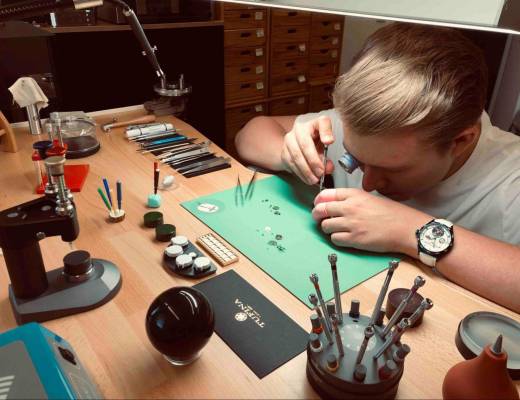16 Fundraising Insights from Experienced Entrepreneurs
Successful fundraising requires strategic planning and relationship building. We asked industry experts to share one thing they wish they’d known about fundraising before they started and the advice they’d give to entrepreneurs seeking funding for their ventures. Discover advice on everything from keeping investor groups manageable to developing trust through consistent communication.- Always Create Two Business Plans
- Build Investor Relationships Before Needing Capital
- Lead With Problem Size Before Solution Details
- Choose Investors Like Hiring Key Team Members
- Maintain Bootstrap Mentality After Securing Funding
- Demonstrate Market Momentum Rather Than Perfect Plans
- Develop Trust Through Consistent Progress Updates
- Tell A Compelling Story Beyond Technical Details
- Build Relationships Long Before Asking For Money
- Balance Fundraising With Customer-Focused Growth
- Seek Alignment With Investors Beyond Capital
- Plan For Fundraising To Take Extra Time
- Personalize Your Pitch To Individual Investors
- Keep Your Investor Group Small and Hands-Off
- Research Investors Before Making Your Pitch
- Share Your Journey Rather Than Perfect Stories
Always Create Two Business Plans
I wish I’d known that fundraising when you don’t need money is infinitely easier than fundraising when you do. After helping thousands of entrepreneurs raise over $4.3 billion, I’ve seen this pattern destroy more companies than bad products ever could.
The biggest mistake I see is entrepreneurs betting everything on securing outside financing without having a Plan B. I had one client who burned through 18 months chasing VCs for a $2M round while their bootstrapped competitor captured their entire market opportunity. We ended up pivoting them to a $200K friends-and-family round and they’re now profitable — but they could have avoided that near-death experience entirely.
My advice: Always have two business plans. One for if you get funded, one for if you have to bootstrap. Most capital-intensive businesses can be restructured to require modest initial funding if you’re creative about sequencing your milestones.
The other thing that kills deals is entrepreneurs who haven’t done bottom-up financial modeling. When I see round numbers like “$1M for R&D in Year 2, $2M in Year 3,” I know they haven’t thought through actual hiring dates, specific equipment purchases, or realistic sales timelines. Investors can smell lazy assumptions from across the conference room table.

Build Investor Relationships Before Needing Capital

Lead With Problem Size Before Solution Details
I wish I’d understood that having a compelling “why” behind your product matters more than perfect financials when you’re starting out. When my healthy 33-year-old friend died from a staph infection she got from a door handle, that tragedy became the foundation story that opened doors to over $50 million in funding solutions during my time at Sage Warfield.
The biggest mistake I see is entrepreneurs pitching features instead of solutions to real problems. When we developed GermPass, we didn’t lead with “UVC chambers that kill germs in 5 seconds” — we led with “54,000 people die daily from preventable infectious diseases, and 80% spread through hands.” That immediately made investors understand the market size and urgency.
Start fundraising conversations by quantifying the problem, not your solution. Our lab results showing 99.999% efficacy against SARS-CoV-2 only mattered after investors understood that Hospital Acquired Infections were costing the healthcare system billions. The data becomes powerful when it’s tied to a problem that keeps your target market awake at night.
Most importantly, don’t wait until you need money to start building credibility. We went from garage tinkering in 2019 to Harvard Club demos in 2022 because we spent time getting independent lab validation from Boston University and University of Arizona before we needed it for investor meetings.

Choose Investors Like Hiring Key Team Members
One thing I wish I had known before I started fundraising is how much of the process is about fit, not just capital. Early on, I assumed that raising money was simply about proving traction, building a strong deck, and convincing someone to back the vision. What I didn’t fully appreciate was that the wrong investor — even if they write the biggest check — can create more friction than momentum. Misaligned expectations around growth pace, control, or exit strategy can drain energy from the business faster than a lack of funds ever could.
If I could give one piece of advice to founders seeking funding, it would be this: treat fundraising like hiring. You’re not just looking for money; you’re looking for a partner who shares your values and understands your space. Just as you’d screen a senior hire for cultural fit and complementary skills, do the same with investors. Ask them how they’ve supported companies through downturns. Ask what level of involvement they expect. Ask what success looks like to them. The answers will tell you whether they’ll stand beside you when things get hard or push you in a direction that doesn’t serve the business.
Another overlooked truth is that fundraising takes more time than most entrepreneurs budget for — both in hours and in emotional energy. It pulls focus from the actual work of running the company. That’s why having a strong operational rhythm before you start raising is key. Investors notice when your business keeps moving forward even while you’re on the road pitching. It signals discipline and resilience, and it makes the conversation less about survival and more about scale.
Fundraising can open incredible doors, but it’s not the only path. Bootstrapping, strategic partnerships, or smaller rounds can sometimes get you further with fewer strings attached. The question isn’t, “Can I raise?” but, “Should I raise — and with whom?” That shift in mindset changes the dynamic. Instead of chasing capital, you’re inviting the right people to join your journey.
For entrepreneurs just starting out, remember that money isn’t the end goal. The real win is building a business that lasts. Funding is simply fuel — and fuel only works if the engine is built to run.

Maintain Bootstrap Mentality After Securing Funding
After 25 years on both sides of the fundraising table, the one thing I wish I had understood earlier is that raising money is the easiest part of building a company — it’s what you do with it that determines success or failure. As an investor, I’ve watched countless founders celebrate closing their round as if they’d reached the finish line, when in reality they’re just at the starting gate. The most dangerous moment in any startup’s life is the 90 days after funding, when the pressure to spend and scale can destroy the very scrappiness that made you fundable in the first place.
From the investor side, I’ve learned that the founders who succeed are those who treat every dollar like it’s their last, regardless of how much they’ve raised. The best entrepreneurs I’ve backed continued operating with bootstrap mentality even after securing millions — they stayed obsessed with unit economics, customer feedback, and cash efficiency.
My advice: before you raise, exhaust every possible way to validate your model with the least capital possible, because the moment you take institutional money, you’re no longer building a lifestyle business — you’re building a rocket ship that either reaches orbit or crashes spectacularly. Choose investors who’ve been in your shoes as operators, not just financial engineers, because when things inevitably go sideways, you need partners who understand that building companies is about surviving long enough to be right, not just being right from day one.

Demonstrate Market Momentum Rather Than Perfect Plans
I wish I had understood that fundraising success depends more on demonstrating inevitable market momentum than having a perfect business plan — investors fund trajectories, not ideas, which completely changes how you prepare for and approach funding conversations.
Most entrepreneurs spend months perfecting pitch decks, financial projections, and competitive analyses, believing that comprehensive planning demonstrates investment-worthiness. However, investors see hundreds of polished presentations and focus instead on evidence that your business has unstoppable forward motion regardless of funding.
The key insight is that “fundable” means showing organic growth signals that suggest the business will succeed with or without investor money. Strong customer traction, validated demand, team momentum, and market response patterns matter more than projected returns or detailed implementation plans. Investors want to join a moving train, not fund a stationary engine.
This realization changes everything about funding preparation. Instead of perfecting presentations, focus on generating measurable progress: customer acquisition, revenue growth, product adoption, or market validation. Your funding story becomes, “Here’s what we’ve accomplished and here’s how investment accelerates our existing momentum,” rather than, “Here’s our plan for what we might achieve.”
The practical advice: delay fundraising until you have compelling progress metrics. Even modest traction with clear growth trends is more attractive than ambitious projections without validation. Investors bet on teams that execute consistently rather than those who plan comprehensively.
The strategic advantage of this approach is that it positions fundraising as growth acceleration rather than business validation. When you have momentum, investors compete to participate rather than evaluating whether to believe in you. This creates better terms, faster decisions, and partnerships with investors who genuinely understand your market trajectory rather than just your business concept.

Develop Trust Through Consistent Progress Updates
One thing I wish I had known before starting fundraising is just how much of it is about relationships rather than the pitch deck alone. Investors rarely write checks after a single meeting — they want to see consistency, trust, and how you handle challenges over time.
My advice to entrepreneurs is to start building those relationships early, even before you need the money. Share your progress updates, ask for feedback, and let potential investors see your journey unfold. By the time you’re formally raising, you’re no longer a stranger making an ask — you’re a founder they already believe in.
Fundraising is less about convincing and more about alignment. Find investors whose vision matches yours, and the process becomes a partnership rather than a transaction.

Tell A Compelling Story Beyond Technical Details

Build Relationships Long Before Asking For Money
One thing is that you don’t want to ask for money when you need money.
Entrepreneurs need to be building relationships with investors and influential people way before you’ll have an ask. They need to trust you and see your journey.
If anything, they should want to give you money once they see the progress you are making as a company.
For me, it took roughly 3 years of relationship building to get to a point where investors felt comfortable enough to ask me if they could invest. I didn’t have to “sell them.” The relationship I built up to that point and track record of progress did the talking.

Balance Fundraising With Customer-Focused Growth

Seek Alignment With Investors Beyond Capital
One thing I wish I had known earlier about the fundraising landscape is that capital is never just about money — it’s about alignment. Too many founders treat fundraising as a transaction when, in reality, it’s the beginning of a long-term partnership that will influence every strategic decision they make.
Having spent over two decades deploying capital — more than $7 billion across hedge funds, venture deals, and private companies — I’ve learned that the most successful ventures are the ones where the investor and founder share a clear vision of value creation, governance, and time horizon.
My advice to entrepreneurs is simple: raise less, but raise smart. Focus on investors who understand your market, who will still pick up the phone when things aren’t going well, and who can offer strategic input beyond capital. Be radically transparent about your challenges and build a data-driven narrative around why your business exists and how it wins.
We often help families co-invest alongside early-stage companies, and the deals that outperform consistently share three traits: realistic valuations, disciplined capital allocation, and investor-founder alignment from day one.

Plan For Fundraising To Take Extra Time

Personalize Your Pitch To Individual Investors

Keep Your Investor Group Small and Hands-Off
I’ve gone through fundraising more than once. If I could give one piece of advice to founders, it would be this: keep your investor group small and as hands-off as possible.
What I wish I had realized sooner is how harmful it can be to bring in too many investors, especially when they want to get heavily involved without really grasping the product or market.
From my own experience, and from countless startup stories I’ve heard, it leads to extra stress, slow decision-making, and leadership hires that don’t match the company’s (or your) vision. Not to mention that it will consume a lot of time and energy.
In fact, the more time you spend catering to investors, the less time you have building your business.

Research Investors Before Making Your Pitch

Share Your Journey Rather Than Perfect Stories
So picture this: My first pitch meetings. I had slides, metrics, fancy graphics. Thought the product was enough. But after one of those early investor calls, I got this feedback: “Your idea has potential. But I don’t know you yet.” Ouch. It struck me — I was trying to sell the dream, not letting people in on the journey.
From that moment, I started doing things differently. I’d send updates — small ones — just to share what was going well, what broke, what I was thinking of changing. Not when I needed something. Just because I wanted someone to see the process. And funny thing: those messages built more trust than my polished pitch ever did.
So, here’s what I’d tell someone about to raise:
Don’t wait until you’ve got everything buttoned up. Start the conversations now.
Be open with small wins and your stumbles. Investors hear plenty of success stories — they really remember honesty.
Treat it like sharing your work, not selling a perfect story. Send a note: “Here’s what we tried this month. It failed. Here’s what we’ll improve.”
And the biggest thing: listen. Ask for advice. You’ll learn what investors care about, what keeps them up at night. That shapes how you pitch them later.
In the end, fundraising felt less scary when I realized it’s not a one-off ask. It’s more like growing a friendship. And those relationships? They make the “ask” a lot more natural.






